Gabon
Things to DO
Libreville
French for "free town", the city's name was chosen by colonial lieutenant Édouard Bouët-Willaumez when Africans freed from the captured brazilian slave ship L'Elizia settled here in 1849. The day on which the freed slaves arrived in Gabon is generally regarded as the founding date of the city, although people, mostly the Mpongwé, had been living in this area long before. In fact, in preceding years the French had been making great efforts to increase their power on this part of the coast.
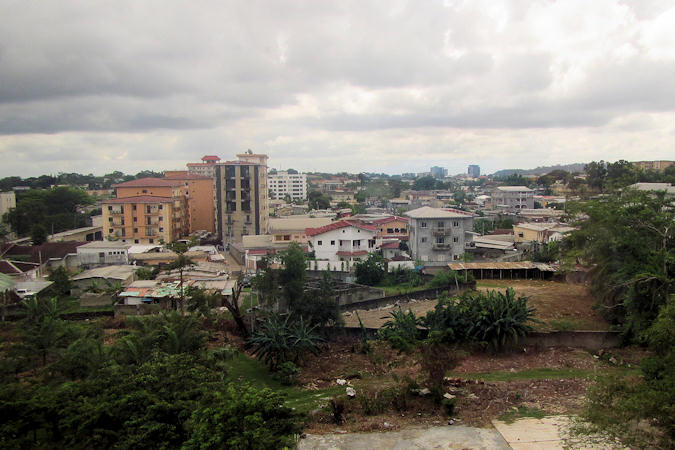 |
|||||
In 1839 the local Mpongwé chief Antchoué Komé Rapontcombo (known to the French as King Denis) put his mark
to a treaty placing his territory under the French flag, the first of many such treaties signed with local chiefs.
By 1860, Libreville is said to have consisted of little more than the village of the freed slaves, a trading post
and a handful of missionaries.
The city started to grow a bit after World War II, but the real expansion wouldn't come until the years following
Gabon's independence in 1960 and the 1970s petrol boom, wich turned the city into a magnet for immigrants from
neighbouring countries and caused a rural exodus in Gabon itself. Today, Libreville has an official population of 820.000.
Former presiden Omar Bongo had big ideas for his capital back in the days when the coffers were overflowing
with petrol money, and for most of the 1970s the city resembled a massive building site. Bongo built a new waterfront
Presidential Palace, the first skyscrapers, wide roads, new ministries, luxury hotels and a succesion of futuristic
buildings that line boulevard "Triomphal Omar Bongo Ondimba", the boulevard he - unsurprisingly - named after himself.
Since he came to power in 2009, Ali Bongo has also been heavily investing in public works, but on the whole is
probebly a touch less megalomaniacal than his father.
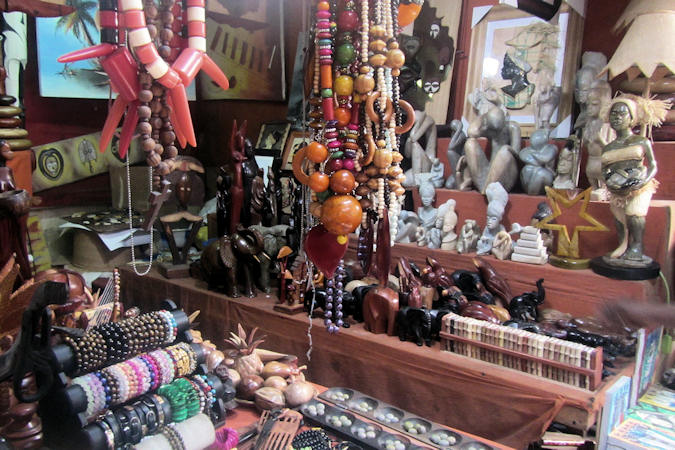 |
|||||
On of the city's major downsides, and a constant gripe of visitors and residents alike, is the high cost of living
(or visiting). Ranked as the world's 18th most expensive city, it costs more to live in Libreville than in London, Paris
or New York. Les Librevilleois, whether native-born or recently arrived, can all agree: the city is très, très cher.
There is a covered artisans' markets in the city centre: The Grand Village Artisanal. They sell crafts from all over
Africa, including carved masks, statues and jewellery, as well as bowls, boxes, chairs beads and more. Before you enter,
make sure you feel ready for eager salesmen.
Atop a hill looking down on Port Môle, Cathédrale Notre-Dame-de-l'Assomption is the seat of Libreville's archbishop.
It was built in 1958, and carefully positioned to preserve the 1864 Église Sainte-Marie that sits directly behind it
on the former site of the 1843 Fort-d"Aumale; this fetching red-steepled church is among Gabon's oldest structures.
Ndjolé
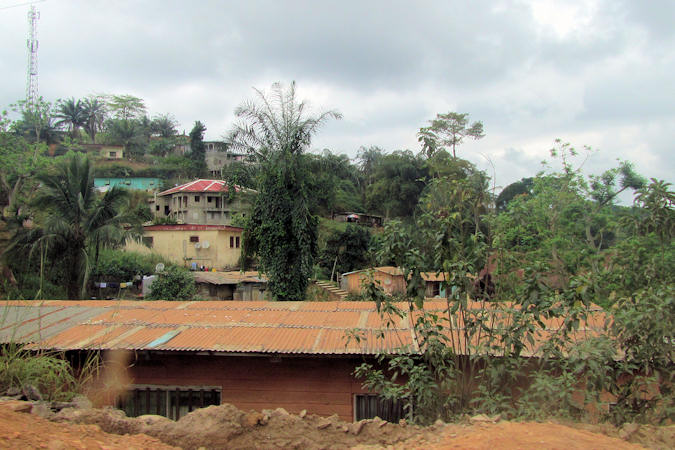 |
|||||
Ndjolé, home to 8.200 inhabitants is in itself not a reason to visit. In fact, it's the sort of place where you
might find yourself killing a bit of time on your way somewhere else. Being the largest town for a good strech in either
direction, however, it does have the advantage of certain amenities, including a petrol station, pharmacy, police station,
church, mosque and supermarkets, as well as ahandful of places to eat and sleep.
Traditionall, Djolé was the place where logging companies emtied their cargo into the Ogooué for transportation to the coast,
as it's the last city that can be reached by boat, above there are rapids in the river. This system is still practised today,
but the good state of roads to the coast means logging trucks are increasingly common.
The small island of Missanga, opposite Ndjolé on the Ogooué is where the Guinean anti-colonialist fighter Samory Touré was
exiled and imprisoned for two years until his death in 1900. (He was not the only troublesome African the French
used Gabon as a penal colony for).
Parc National de la Lopé
A UNESCO World Heritage site, the Parc National de la Lopé is fed by the mighty Ogooué River. This impressive body of water is surrounded by deep ridges and lush forested areas. In the east, the park is bordered by the Offoué River, to the west lies the Mingoué River, while the du Chaillu Mountains are the southern border. Almost
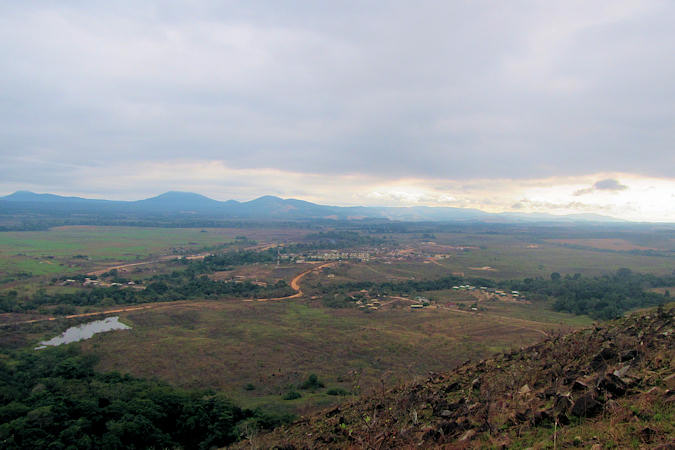 |
|||||
5.000 square kilometres lay between the borders of the park with most consisting of rainforest and with a small portion
attributed to grassland savannah.
The explanation for this landscape lies in the last ice cap in northern Europe, 18.000 years ago, whenthe cooler, drier
climate caused hreat streches of tropical rainforest to disappear. When the Ice Age ended about 12.000 years ago, the forest
recolonised the open savannah. The forest that you find in Lopé, therefore, is relatively young compared with some of Gabon's
truly ancient forest. There are still areas of savannah along the northern and eastern borders of the reserve, which have
survived because here teh aveage annual rainfall is just 1.500 mm - insufficient for the forest to take root.
The designated 4x4 safari route largely sticks to the savannah, with brief forays into patches of forest, where an exlpoiration
on foot is possible. August and September is the best time when elephant, buffalo, monkey and river hog are most visible.
The newest activity at Lopé is Mandril Tracking and this is one of the only places in the world where it is possible.
Visitors can join researchers, who have tagged several members of a 1.000-strong troupe on a tracking mission, conducted in
4x4 and on foot.
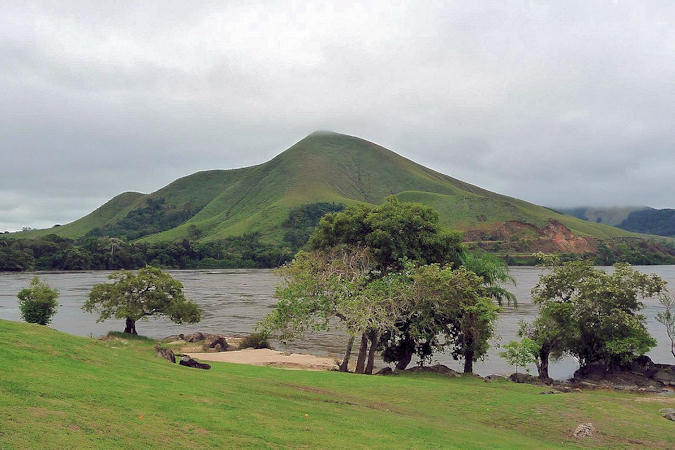 |
|||||
The morning journey requires several stops to put up the radio antenna and triangulate their location, and makes for
an utterly thrilling encounter when you finally meet.
An other outing you can do is to climb Mount Brazza, named after the exlporer Savorgnan de Brazza, whose European
expedition was the first to arrive here in 1875. The actual ascent isn't especially strenuous, taking about an hour to the
antenna at the top. The climb is best done in the afternoon, when you've got a higher chance of enjoying expansive vieuws
over the Ogooué and the forest-savannah patchwork of the park below.
Lopé village just offers a few shops selling tinned food and local restaurants on the village's main drag and some
small bars at the train station, where you might see a logging train.
The small Lopé Museum is exhibiting findings from the prehistoric site and information about the flora and fauna.
Lambaréné
Split into three parts by the bifurcation of the Ogooué, Lambaréné is a river-island city with around 39.000 inhabitants.
The three parts of the city - the Rive Gauche (Left Bank), Île Lambaréné (Lambaréné Island) and the Rive Droite (Right Bank)
- are divided by the river and united by bridges and piroques. Each part feels different from the others. Quater Isaac
on the Left Bank has the highest concentration of small eateries and bars, but also the most rubbish and hustlers. As soon as
you cross over the Pont d'Isaac on to Lambaréne Island, the city feels cleaner and greener.
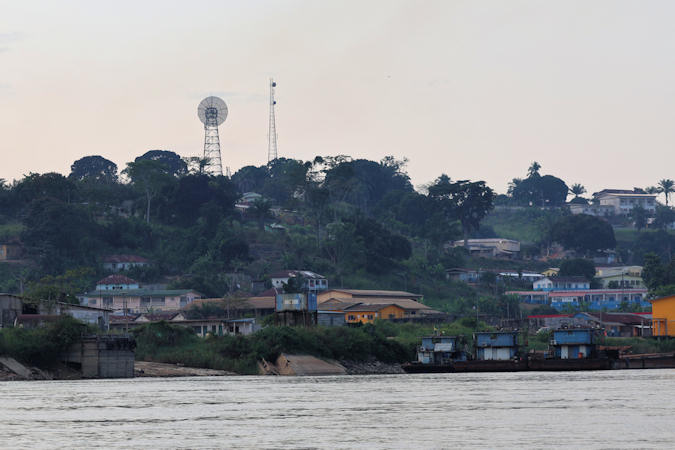 |
|||||
Continuing over the Pont d'Adouma
brings you to the Right Bank and the site of Albert Schweitzer's hospital, which put Lambaréné on the map for Europeans and
remains the town's most significent institution and premier tourist attraction to this day.
It was in 1874, after the exploitation up the Ogooué River by Pierre Savorgnan de Brazza, that the urban
agglomeration was really born with the installation of the first commercial houses which were gradually joined by others.
This period was marked by the arrival of missionaries between 1870 and 1880. The the Catholics opened the Maison
Saint-François Xavier on the tip of the island and founded the Church of the same name in 1881.
A town emerged with the opening of the roads connecting the various old villages. In January 1883, the commander of the
territory of Gabon, Masson, had a military post installed in this expanding town, which became, in 1884, an administrative
unit which was named "Lambarene" taken from the vernacular language myènè "lémbaréni" which means
"try therefore".
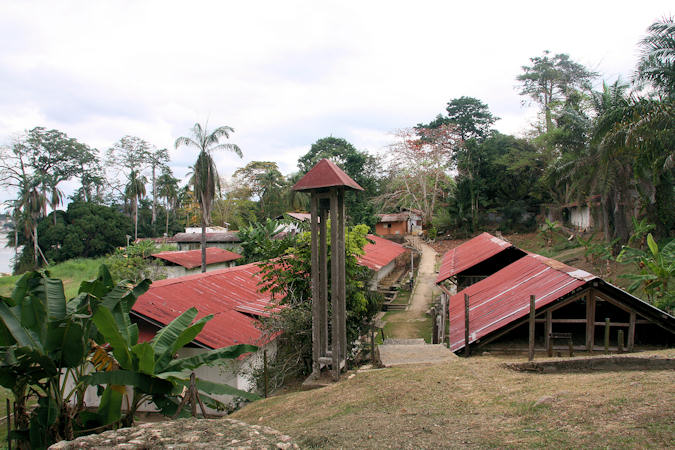 |
|||||
Hôpital Albert-Schweitzer, founded in 1924 by Albert Schweitzer treats today about 30.000 patiens a year.
It is well known, and people come from all over Gabon to get treated. Additionally, the premises house the country's only
geriatic and psychiatric units.
The atmosphere is as lively and relaxed as a small village, with woman selling fruit near the entrance, patients'kids playing
in the dust and a small shop stocking basic provissions.
Aswell as being a place of healing it has also become a place of
pilgrimage. Admires of "le grand docteur" come to see the museum that since 1987 has occupied his former lodgings.
His room is simplicity and order itself; his white doctor's aprom, his pharmaceutical cabinet, his narrow bed, his parrot's cage.
Visitors can also visit his study, his wife's room and the conference room that before his death served as a dormitory for nurses.
Behind the house is a cemetry with tombs of hundreds of care-givers and patients, as well as the doctor's grave.
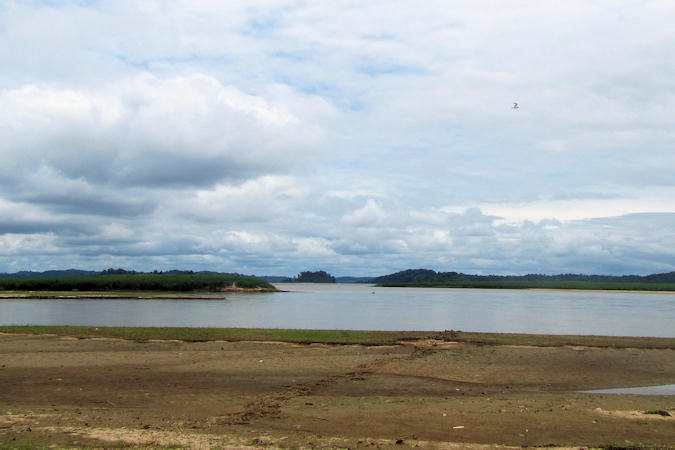 |
|||||
An excursion into the lakes by motorised piroque is a wonderful way of passing the time.
The Lac Onanqué offers breathtaking views and a serene atmosphere, making it the perfect destination for a peaceful
get away. The lake is surrounded by lush greenery and dense forests, providing a picturesque backdrop to observe monkeys,
pelicans, hippos etc.
For lunch we made a stop in Ngomo. Here on the Ambila River the protestant mission was founded in 1898 by the Alsacian
pastor Ernest Haugh, who is buried behind the church. Today the church , school and dispensery are still in use.
When returning keep a good look for Pont d'Adouma where underneath are thousands of Egyptian Fruit Bats are roosting.
Omboué
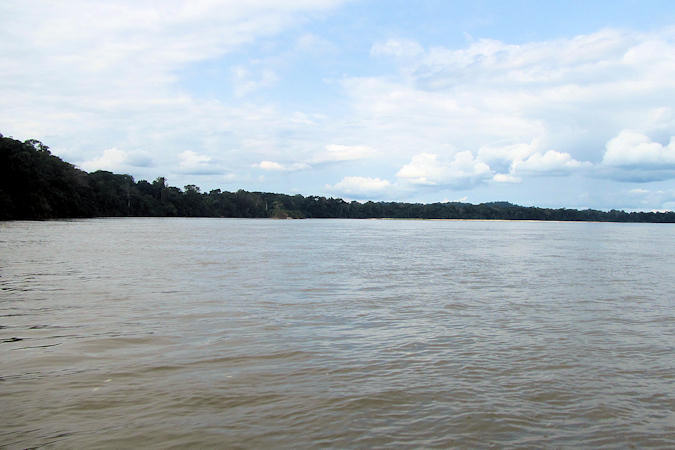 |
|||||
There are no real options to reach the coast out of Lambaréné by road, so the only way to reach Omboué is a travel by
motor boat along the Ogooué River. The trip lasts around 5 hours and it is just amazing. You get a real feeling of how the
first explorers felt navigating along the Africa tropical rivers.
Omboué is the jumping-off point for the area's main attraction Loango National Park. While it's a sleepy town of just 2.000
people, the facilities here are suprisingly good and it's got a fetching location on the west side of the Ferna Vaz Lagoon,
where boat trips, jet skis and other watersports are available.
The lagoon takes its name from the Portuguese sailor Fernão Vaz, who discovered it at the end of the 15th century. The
setting is delightfully dramatic, with the lagoon's dark waters ringed by an impossibly green and vegetated shore.